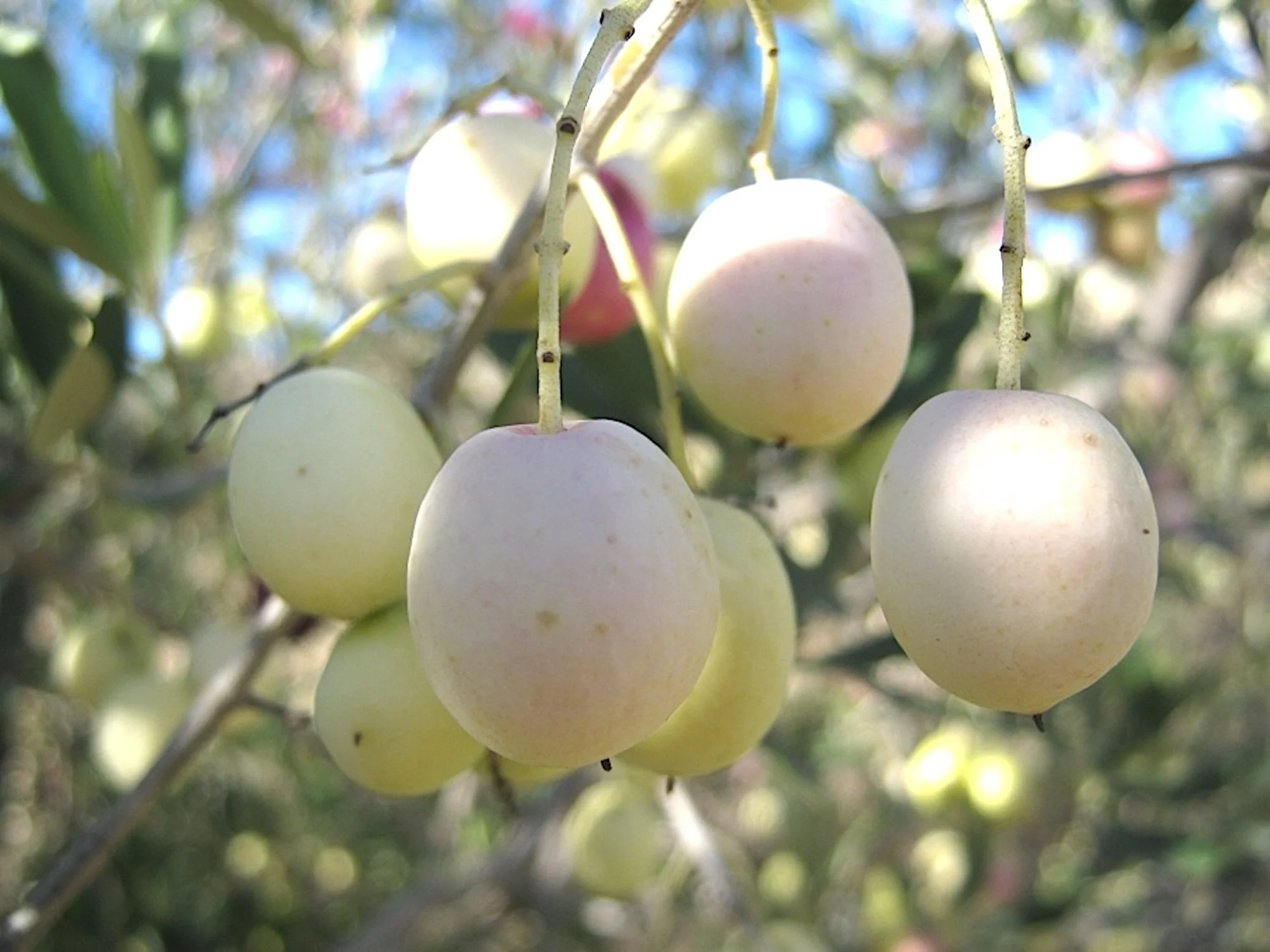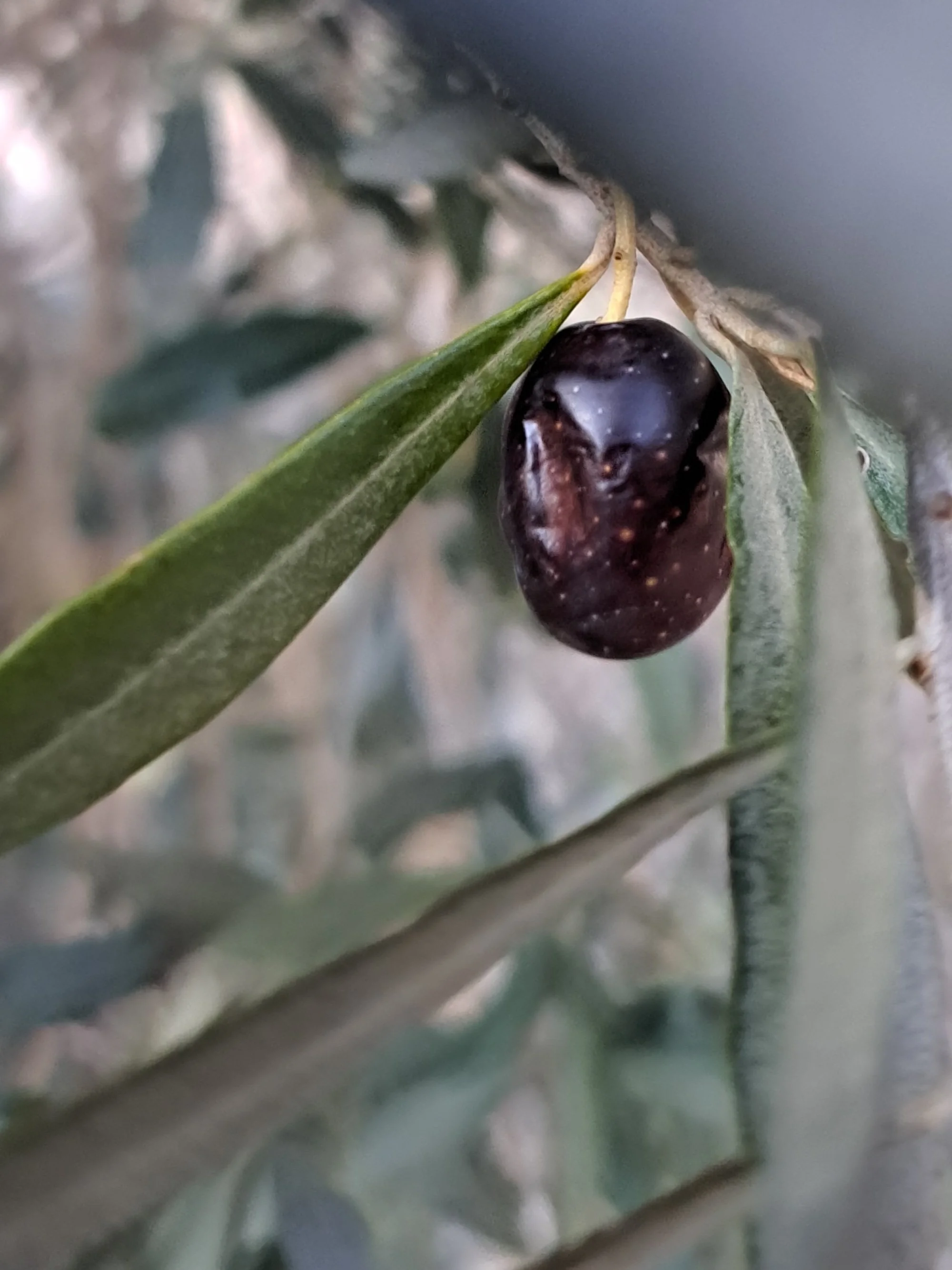The Top Spanish Olive Varieties for Olive Oil
While roughly the size of Texas and often outshone by its Mediterranean neighbors, Spain is a powerhouse when it comes to olive production. The country is home to over 400 varieties (and counting!) of olive trees and produces more olive oil than any other country in the world. A drive through the southern countryside, a gander through the supermarket, or a meal at any restaurant in the country is evidence of its importance in Spanish culture and cuisine.
Many Spanish olive oil varieties have become more popular and marketable in the past few years, but as Seville, Spain resident and olive oil expert Alexis Kerner reminds me, it's important not to get stuck on just a few varieties. Thus, these varieties are listed alphabetically, as each has so much to offer. New olive varieties are being discovered constantly, so these 25 are just the beginning of your journey through the groves.
Alfafara
Also known as “Alfafarenca,” the Alfafara olive is grown primarily in Alicante but is also found in Albacete and Valencia. Its bitterness and spice are very well balanced, with notes of banana and ripe tomato. Resistant to cold and humidity, the oil is highly shelf-stable and does not go rancid quickly. The fruit also contains high levels of oleic acid.
Aloreña
Aloreña olives photo credit depositphoto
Typical in Málaga, Aloreña is the only table olive in Spain with a protected denomination of origin (D.O.P.). Of its some 230,000 hectares (about 568,000 acres) of groves, many of the trees in the area are over 100 years old. Its fruit is meaty and sweet and the oil is a light green color with fruit and grassy aromas, and hardly any bitterness.
Arbequina
Arbequina olives by Jaumeboldu, CC BY-SA 4.0, via Wikimedia Commons
While native to Cataluña, Arbequina is now grown all over the country. While its trees are small with few branches, they produce small but mighty fruits— Arbequina has a very high yield. The fragrant oil is sweet and fruity (think tropical fruits and almonds), with hardly any bitterness or spice. But because of its delicate nature, it’s best used as a finishing oil or for aioli/mayonnaise rather than for high-temperature cooking.
Blanqueta
Oliva blanqueta by Ultralocàlia is licensed under CC BY-NC-SA 2.0.
Blanqueta, derived from the word “blanco,” or white in Spanish, this olive takes on a white, ashen color when ripe. It is spherical in form and is grown primarily in Alicante, but you can also find it in Valencia, Murcia, and Albacete. The fruity oil also has an intense spice and goes rancid quickly.
Castellana
Castellana olives
Also called Verdeja, the Castellana olive originated in Castilla-La Mancha. It is currently the only olive accepted in the Alcarria D.O. Its oil has an unripe lemon color and is fruity and aromatic— grass, leaves, banana—, with a pronounced bitterness and balanced spice.
Changlot Real
Changlot Real olives
“Changlot” translates to a “portion of a bunch of grapes,” which refers to the way the olives grow in clusters on the branch. Native to the Valencia region but also grown in Alicante, Córdoba and Jaen, the Changlot Real is one of the lesser known single varietals and is usually sold at a premium. It is characterized by its very fruity aromas— think peach and citrus— along with wood and almond. It’s moderately spicy and just slightly bitter.
Cornicabra
Cornicabra olives
This is the second most cultivated olive in Spain, with groves mostly around Toledo and Madrid. While Cornicabra is native to Castilla-La Mancha, you will also find groves in Extremadura. The fruit has a slightly curved horn shape, hence the name “cornicabra” or “goat horn.” Cornicabra oil is very aromatic, with notes of ripe fruit, apple, and tomato, as well as herbal qualities. It has a great balance of sweetness and bitterness, and just a touch of spice. Cornicabra is often used as a base for blends and has a high resistance to rancidity.
Empeltre
Oliva empeltre en Veruela by Willtron is licensed under CC BY-SA 4.0
“Empeltre” comes from Catalan word meaning “graft.” This variety has expanded widely throughout the country, but originated in Zaragoza and is now mostly planted in the northeastern areas of the peninsula, as well as the Balearic Islands. Empeltre produces a yellow hued oil that is sweet, with fruity aromas of green apple and almond.
Farga
Farga olives
Farga is grown mostly in Castellón and Tarragona. The majority of these trees are over 100 years old and many of its tree trunks have a circumference of over sixteen feet. Gourmet bottles of this sweet yellow oil with its nutty and floral notes boast “aceite milenario” on the label, meaning the oil comes from these century-old trees. Farga is also commonly mixed with Morrut and Sevillenca oils.
Gordal de Sevilla
Gordal de Sevilla by Veinticuatro de Jahén, CC BY-SA 4.0, via Wikimedia Commons
Gordal de Sevilla is one of the most famous varieties in the world for table olives because of its large size and meaty texture. In Italy, the olive is often referred to as the “bella di spagna” or the “Spanish beauty. They’re rarely used for oil, as they have a low yield that oxidizes quickly.
Hojiblanca
Hojiblanca by Veinticuatro de Jahén, CC BY-SA 4.0, via Wikimedia Commons
Distinguished by the characteristically white underside of its leaves, the Hojiblanca tree is originally from Lucena, Córdoba and grows primarily in Andalusia, in the provinces of Córdoba, Málaga, Seville, and Granda. It is the third most widely planted varietal in Spain, with 265,000 hectares (over 650,000 acres) in the area. Its fruits are used for both table olives and oil, producing a fragrant oil— freshly cut grass and artichoke— with a touch of sweetness and a slight bitter finish reminiscent of almond. Hojiblanca doubles as a cooking and finishing oil.
Lechín de Sevilla
The Lechín de Sevilla is one of the most widely planted olive trees in Andalusia, especially in the Sevilla area. Its fruits have an ashen white exterior and produce a well-balanced fruity oil with yellow-green hues and a thick, unctuous texture.
Lechín de Granada
The Lechín de Granada grows in the southeast of Spain from Granada to Albacete. Its fruit is perfect for both table olives and oil, with yellowish hues and a pleasant bitterness and spice.
Manzanilla Cacereña
The Manzanilla Cacereña grows mostly in Extremadura (in Cáceres and Badajoz) but also extends to Salamanca, Ávila, and Madrid. The tree is especially resistant to cold and nutrient deficient soils. Harvest usually happens early in the season to produce a dark green oil (often unfiltered to enhance fruity and grassy aromas) and some consider it to be one of the most high caliber oils in Spain.
Manzanilla de Sevilla
Manzanilla de Sevilla grows mostly in Sevilla, with some groves in Huelva and Badajoz. While the tree is primarily utilized for table olives, the less visually appealing fruits are pressed for high quality oil. Yield on this fruit is low, which pushes the bright green oil into the gourmet category, with a balanced bitterness and spice, and intense fruit aromas reminiscent of grass, almond, and fig tree.
Morrut
Native to Valencia, Morrut is very much linked to the area of Baix Ebre-Montsiá, between Castellón and Tarragona. The fruit is a violet black color and produces complex, balanced, and elegant oils often bottled as monocultivars.
Morisca
Mostly concentrated in Badajoz and northern parts of Sevilla, Morsica is a lesser-known variety but is very high-quality and often bottled as a monocultivar. The fruit is harvested early and produces an intense green oil with balanced bitterness and spice and notes of fruit, nuts, and artichoke.
Picual
Picual by Veinticuatro de Jahén, CC BY-SA 4.0, via Wikimedia Commons
Picual is not only the most widely planted variety in Spain (about 2.5 million acres), but it is the most abundant variety in the world. The olive grows primarily in the eastern provinces of Andalusia, but also extends into Castilla-La Mancha. Part of its charm is the oil’s high resistance to oxidation, offering an extensive shelf life, as well as its ability to hold up to high cooking temperatures while also working as a flavorful finishing oil. Picual has a robust, fruity personality with a light pepperiness that is easy to identify. It also has a high proportion of oleic acid (80%).
Picudo
While only about 86,500 acres of Picudo (also called Carrasqueña) grow in Andalusia, it is considered one of the region’s most important varieties. Picudo olives have a very high yield, with an aromatic oil typically characterized by green fruits like green apple and a very low bitterness. It’s often mixed with Hojiblanca to create award-winning bottles and is one of the few smaller varieties available in the U.S.
Royal de Cazorla
Native to Cazorla and grown all throughout the province of Jaén, the Royal de Cazorla produces reddish fruits when fully ripened. The highly sought-after oil is pale yellow in color with a delightful balance and hardly any bitterness— just sweet and fruity notes of almond, vanilla, and apple.
Sevillenca
Sevillenques by Vador Faura, CC BY-SA 4.0, via Wikimedia Commons
Also called Serrana de Espadán, the Sevillenca grows in Tarragona, Valencia, and Castellón. Its oil is light, sweet, and fruity (banana aromas) with very little bitter qualities and a pleasant spice.
Verdial de Badajoz
The Verdial is a variety found all over Spanish olive regions, but differs based on the region in which it is cultivated. The name Verdial (“verde” means green in Spanish) references the green color it maintains as it ripens. The Verdial de Badajoz, from the Extremadura province, has medium-high fruity qualities reminiscent of almond, apple, and ripe fruit, with a noticeable spice. These olives are also used for table olives.
Verdial de Húevar
Grown primarily in Huelva but also in Seville, the Verdial de Húevar adapts well to various soil compositions, be it excess moisture or even drought-like conditions. The fruit produces a vibrant green color and is fruity, spicy, and very bitter. It’s often added to processed, lower quality olive oils for both color and flavor.
Verdial de Vélez-Málaga
This variety of Verdial grows primarily in Málaga, specifically in Axarquía, and often on mountainous, inclined terrain. The fruit produces a sweet oil with light fruit flavors and hardly any bitterness.
Villalonga
The Villalonga olive, also known as Manzanilla within the region, grows in Valencia and Alicante. The fruits are spherical and large, and used in their green unripe state as well as when dark black and ripe. Growers harvest early for oil (its primary use) while the fruit is also used for table olives. The Villalonga tree produces a large spherical fruit with light spice and bitterness, and aromas of freshly cut grass, almonds, and apples.














